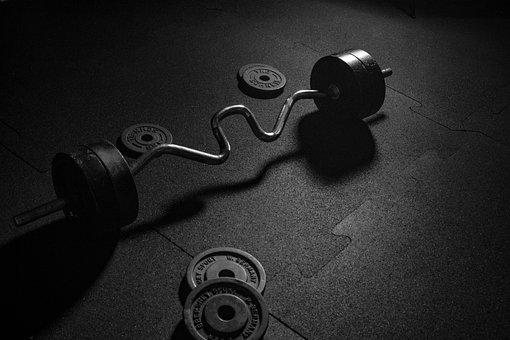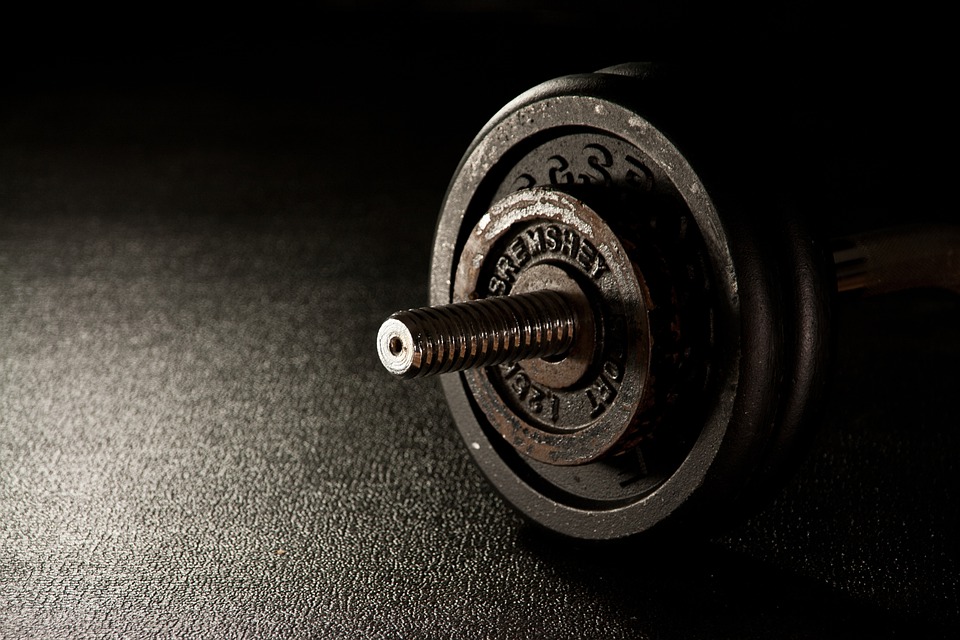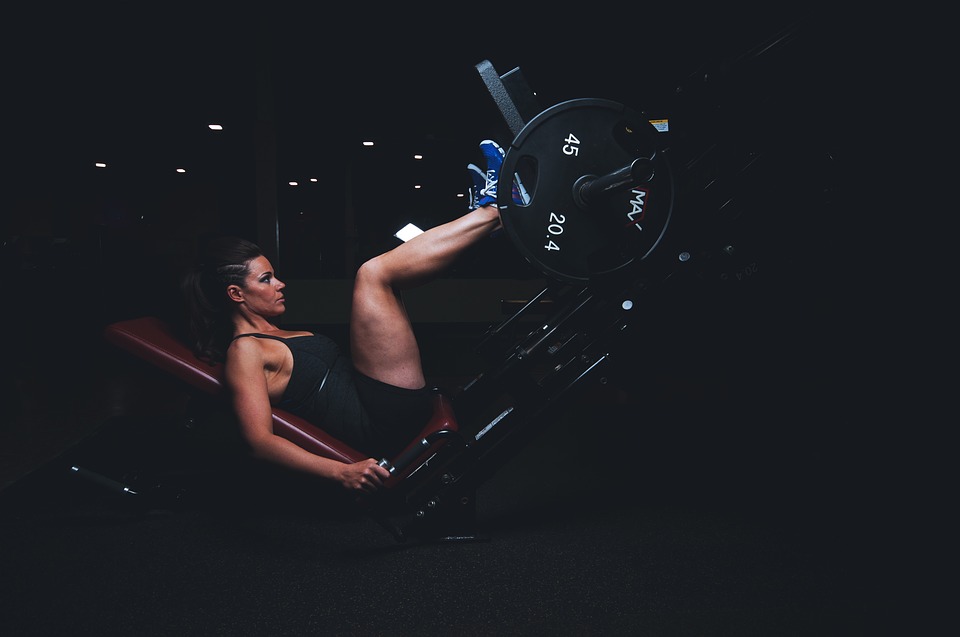
What Is The Difference Between Strength And Hypertrophy?
This type of training generally uses heavier weights and fewer repetitions than other types of resistance training. Hypertrophy training is exercising with the goal of increasing muscle size. This usually involves lifting heavier weights and doing fewer reps than with other types of resistance training.
The goal of strength training is to make your muscles stronger so that you can lift more weight.
Although they may sound alike, you can change your training style to target different goals.
This is achieved by altering the number of sets, reps, and the weight lifted.
Which Is Better?
You need both strength and hypertrophy to improve your health and fitness.
If you’re looking to build muscle, hypertrophy training is the way to go. Lifting lighter weights for more reps will help you get the hang of proper form and increase your muscular endurance.
In order to build strength, you need to use a weight that is heavy enough to fatigue your muscles after a relatively low number of repetitions.
The one you should do depends on your lifting experience and your training goals.
If you are a beginner, focus more on hypertrophy.
Does Hypertrophy Make You Stronger?
A muscle that is bigger has the potential to be stronger than a smaller muscle. Therefore, training that leads to hypertrophy, or an increase in muscle size, will also make you stronger to some degree.
You can only achieve your maximum strength if you train with heavy weights.
Weightlifters are stronger than bodybuilders because they can better utilize their muscles’ abilities.
Does Strength Matter For Hypertrophy?
Training with heavy weights will also cause an increase in muscle size.
In order to get stronger, you need to train your nervous system to fire more motor units simultaneously.
After you achieve a particular level, weightlifting will no longer cause your muscles to grow larger.
So the more you train, the bigger you’ll get – to a point. After that, it becomes a matter of diminishing returns If you want to grow your muscles, you need to focus on the total volume (sets and reps). The more you train, the bigger you’ll get – but only up to a certain point. After that, it’s not as effective.
If you want to be able to lift heavier weights, you need to focus on muscle strength. However, you won’t be able to increase your volume if you only train for muscle strength.
Should I Train For Strength Or Hypertrophy First
Should strength or hypertrophy be the focus for beginners?
If you are a beginner, you should always train for increasing muscle size first.
The hypertrophy rep range is effective for both building muscle and gaining strength in the early stages of your fitness journey.
Start by slowly increasing the amount of weight you lift and focus on perfecting your form. As you build muscle mass and get stronger, you will be able to add more weight and challenge yourself further. With time and practice, you will become a confident and skilled weightlifter.
If you’re not careful, the loads required for strength training can damage your muscles and joints.
Intermediates can train for both strength and hypertrophy.
Can I Do Both Strength And Hypertrophy At The Same Time?
You can work on both muscular strength and size in the same workout.
Here’s how:
Your primary lift for the day should be trained in the 4-6 rep range.
- This has to be the biggest compound exercise of the day (such as squats, deadlifts, bench press, shoulder press, etc)
Your next set of exercises should be focused on muscle growth, typically using repetitions of 8-15.
- These exercises are generally less taxing and generally do not need a barbell. Common examples include dumbbell pressing, goblet squats, and dumbbell Romanian deadlifts.) Some would call these accessory or assistance exercises.
What Sets & Reps Do You Need For Hypertrophy & Strength
The research recommends using lower loads with higher volumes to achieve more muscle growth.
It seems that the amount of time your muscles are under tension is the most important factor in muscle growth.
This is the sets and reps you need to do.
The Optimal Rep Range For Hypertrophy
- Performing 7-12 repetitions per set have been shown to be the most conducive to muscular growth.
- When it comes to sets, 3 is generally a good place to start. 3 sets of 7-12 reps equate to a total of 21-36 repetitions per exercise per day.
- Since we recommend that you train each major movement pattern twice a week, you’ll be doing 42-72 total reps, per muscle group, per week.
It is much more important to focus on movement patterns instead of individual muscles. Movement patterns are compound exercises that hit multiple muscle groups simultaneously.
For example, let’s say you:
- Front Squat 3 sets of 8 repetitions once a week
- Goblet Squat 3 sets of 10 repetitions later that week
- And Reverse Lunges 3 sets of 12 repetitions once during that week
This means that you are doing a total of 9 sets and 90 repetitions of Quadriceps Work per week, as well as indirectly hitting your glutes and your hamstrings for 9 sets.
Why Should You Train For Hypertrophy?
- Hypertrophy causes your muscle fibers to grow in size.
- More size means more potential strength and athleticism.
- More muscle size means more metabolically active tissue. More metabolically active tissue means more fat-burning potential.
How Often Should You Train For Hypertrophy?
- I recommend that you train in the Hypertrophy range for most of your early training career.
- At least 2/3rds of your exercise programming should be dedicated to hypertrophy.
The Optimal Training Volume For Strength
You will not be able to perform as many sets and reps when strength training since you have to lift heavier weights.
The amount of volume you can do is inversely proportional to the intensity of the load you are lifting.
The weight you use for strength training should cause muscle fatigue at around 5 reps or less per set.
You should only train for strength once you have developed a decent amount of strength and are comfortable with the basic functional compound lifts.
The Optimal Rep Range For Strength
- Performing 4-6 repetitions per set is most conducive to muscular strength
- Because the load on the bar increases, the repetitions per set decrease.
- This means that strength training often requires more sets than hypertrophy training. Usually 3-4 sets per exercise.
Most importantly, the weight needs to be challenging.
How heavy should the weight be?
The weights you use should be around 80% or more of the weight you can lift in one try.
Your one-rep max is the heaviest weight that you can lift for one repetition with good technique.
Again, this bears repeating…
This is important to remember: the really heavy weights should only be lifted by experienced lifters who have perfected their technique on all the lifts.
Use your judgment.
It is better to use less weight and have good form than to use more weight and have bad form.
Why Should You Train For Strength?
No matter what situation you find yourself in, being strong is always an asset. By regularly lifting weights and working on strength training, you’ll be better equipped to handle anything that comes up – both in and out of the gym.
- Train your central nervous system to recruit more neural motor units to lift more weight.
- Stronger muscles will also let you break through plateaus you may experience during hypertrophy training, which inevitably happens if you only train in the 7-12 rep range.
- Lastly, you never know when you may have to save someone who is pinned under a car.
General Guidelines
- In total, you should perform around 12-24 repetitions per exercise, per day when training for strength.
- Each major movement pattern should be trained ~twice a week, totaling 24-48 total reps per week.
- The weight must be ~80% of your 1 Rep Max or more
If you are new to lifting, you should not spend more than 1/3 of your time training for strength gains.
The number of strength training sessions you should do each week depends on your experience level. If you are a beginner, you should do fewer sessions than if you are more experienced.
Do You Need to Train for Muscle Failure for Hypertrophy
Vladimir Zatsiorsky wrote in his book The Science and Practice of Strength Training that a muscle fiber that is recruited but not fatigued is not being trained. However, bodybuilders and those seeking impressive hypertrophy gains were already training for muscle failure before he published his book, so he was just confirming what others already knew to be true.
We all know bodybuilders who train with 100% effort every day, focusing on getting those last few reps in. Hell, many of us would rather spend a day working out and screaming than have a half-assed workout. However, as time goes on, it seems like there might be a better way to train for hypertrophy than working out until muscle failure.
Go Big or Go Home
While some people may view bodybuilding as being inspiring, others in the weightlifting community may view those with exceptional physiques asapproving of what it takes to build muscle. It’s important to understand the difference between natural and enhanced individuals when it comes to bodybuilding. Those who are enhanced have an easier time recovering from workouts, which is a huge advantage.
More Pain, Less Gain
If you want your workouts to be effective, you need to be able to lift weights often.Think about the last time you started a new program or had a very high-volume training session to the point of failure. How did you feel the following days? Chances are, you were pretty sore. Even though some people see a high level of muscle soreness as a painful badge of honor, it’s not likely that you would be able to do the same workout the next day.
There is a low likelihood that you would be able to perform as well if you were tired as if you were fresh.
In other words, it seems that in order to get the most hypertrophy, you actually want to minimize the amount of muscle damage. It was believed that in order to achieve the highest amount of hypertrophy, you needed to cause the highest amount of muscle damage. However, when researchers took a closer look at what was happening during the hours post-training from resistance training, they found that the post-exercise increases in CSA were largely due to swelling and MyoPS elevations were directed more towards muscle repair and remodeling but not associated with muscle hypertrophy. In fact, it looks like increases in muscle hypertrophy tend to be inversely related to high levels of muscle damage. In other words, it seems that in order to get the most hypertrophy, you actually want to minimize the amount of muscle damage.
This effect does not last for a very long time. Our bodies are designed to adapt to change and, because of the repeated bout effect, we are able to recover from muscle damage more quickly. This allows our muscles to grow back stronger.
The Most Important Strategy To Make Long-Term Progress
After determining the amount of training volume you need for muscular size and strength, it is important to consider long-term progress.
The training stimulus should gradually become more intense over time.
To increase muscle mass, you can either lift heavier weights over time or do more repetitions of a particular weight.
You’ll need to do a bit more than you have been.
This is the entire concept of Progressive Overload.
You cannot continue doing this forever, your body will plateau or you will get injured.
So how do we bypass this?
This problem can be avoided by frequently changing the exercises in your weight training routine, about every 8-12 weeks.
Training the same muscle group with the same exercises over time can lead to overuse injuries and pain.
It is recommended that you focus on only 1-2 variations of an exercise at a time, switching them every 8-12 weeks.
For Example:
- Week 1-8: Bench Press and Incline Dumbbell Bench Press
- Week 9-19: Close Grip Bench Press and Wide Grip Push-ups
- Week 20-28: Incline Bench Press and Dumbbell Bench Press
- Week 29-36: Weighted Push-ups and 3-count paused Bench Press
- Week: 37: Restart
And for the Squat Pattern
- Week 1-12: Squat and Reverse Lunges
- Week 13-20: Box Squats and Leg Press
- Week: 21-32: Front Squat and Step Ups
- Week: 33-40: Paused Back Squat and Goblet Squats
- Week 41: Restart
If you rotate your exercises every 2-3 months, you will build better overall strength and keep your training fun and engaging.
Compare your new levels of strength to your previous levels every time you return to a variation.
Final Word
If you do too many sets that take you to the point of muscle failure, you’ll see an increase in muscle damage, central fatigue, and a stall in your progress. A better approach is to gradually increase the number of sets you do that take you close to muscle failure over the course of several weeks. For example, you might start your first week doing sets that are 3 reps away from failure, and then increase the load or reps each week so that you’re gradually coming closer to muscle failure.














